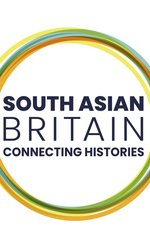Other names
Mota Mathura Singh
Place of birth
Date of arrival to Britain
Place of death
Tooting, London
Date of time spent in Britain
1953–6, 1965–2016
About
Mota Singh was the first barrister to be appointed as a judge in an English court. Born in Kenya, he received his education at the Duke of Gloucester School in Nairobi. He then went on to train as a clerk in a law firm. In his spare time, he was an avid cricketer, playing for Kenya, and was elected president of Nairobi’s Sikh Union Cricket Club. He married Swaran Kaur in 1950.
Singh moved to England in 1953 with his wife and family to study for the Bar, passing his exams in 1955 and joining Lincoln’s Inn. In 1956 he returned to Nairobi, where he set up his own law practice and was appointed Secretary of the Law Society of Kenya. In 1961 became a member of the Legislative Council of Kenya.
In 1965 Singh migrated to England but encountered obstacles to work in law. He eventually joined a property company working on property law and became a member of the London rent assessment panel. His expertise in this area enabled him to set up chambers at Middle Temple. Mota Singh was renowned for wearing a white turban instead of the horsehair wig customary for barristers. He remained unchallenged in this endeavour and set this precedent in 1967.
From 1967 Singh served on the Race Relations Board for a decade. In 1979, he was appointed a recorder of the Crown Court and in 1982 he became a judge at Southwark Crown Court. A devout Sikh, he worshipped at Southfields gurdwara for over forty-five years. He retired from the bench in 2002 but continued to take on other roles – he chaired the Immigration Advisory Service from 2000 to 2010 and the Statutory Committee of the Royal Pharmaceutical Society of Great Britain from 2007 to 2009. He was also a member of the Parole Board between 2009 and 2012 and Vice-President of the children’s charity Barnardo’s. He was knighted in 2010. He died in 2016.
Woolf, Harry, 'Singh, Sir Mota Matharu (1930–2016), barrister and judge', Oxford Dictionary of National Biography (2020) [https://doi.org/10.1093/odnb/9780198614128.013.111561]
Banner image credit
Thurston Hopkins/Picture Post/Hulton Archives via Getty Images
Image credit
© Remaking Britain: South Asian Connections and Networks, 1930s – present


